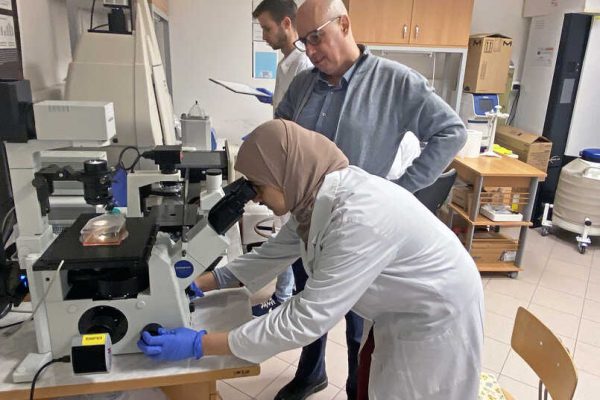The staff of the Szeged Biological Research Center (SZBK) have identified a strain of green algae capable of producing up to ten times more power electricity than previously known species – the institution belonging to the Hungarian Research Network (HUN-REN) announced on its website.
Specialists from the molecular photobioenergetics group investigated the electricity-generating capacity of green algae under the leadership of Nia Petrova. The emergence of plant and animal life forms on Earth was made possible by photosynthetic light energy conversion. Photosynthesizing species produce organic matter and oxygen using energy from sunlight, as well as using carbon dioxide and water. Photosynthesizing microalgae are also capable of producing electricity as a component of so-called bio-photovoltaic (BVP) devices, which are promising potential sources of renewable energy. In the BVP devices, the microalgae capture the light energy, and then some of the electrons “flowing” through the photosynthetic system leave the algal cell and create an electric current with the help of so-called mediator molecules. However, the efficiency of the current BPV devices is so low for the time being that their use on an industrial scale is only a distant plan, they wrote.
A possible solution for increasing the performance of BPV devices can be provided by highly exoelectrogenic algae strains, which are capable of generating a high electric current density.
Nia Petrova and her colleagues have identified a strain of green algae (Parachlorella kessleri MACC-38) that has approximately ten times higher electricity production than algae species described in the literature so far. The current generation of MACC-38 is primarily of photosynthetic origin, and the algal cells retain their viability during the process. By using the MACC-38 strain, the efficiency of BPV devices can be significantly increased, which means that fossil energy sources can become a very promising “green” alternative with a negative carbon footprint. The results of their research were presented by the staff of HUN-REN SZBK in the prestigious journal Bioresource Technology.
Source: Hungarian Trade Magazine












